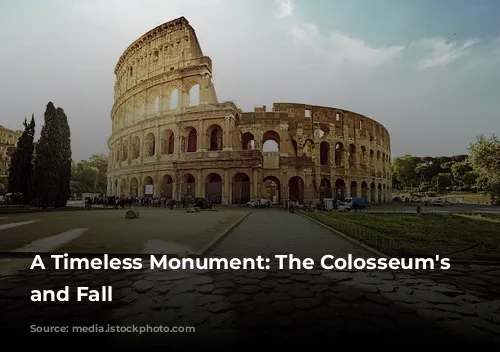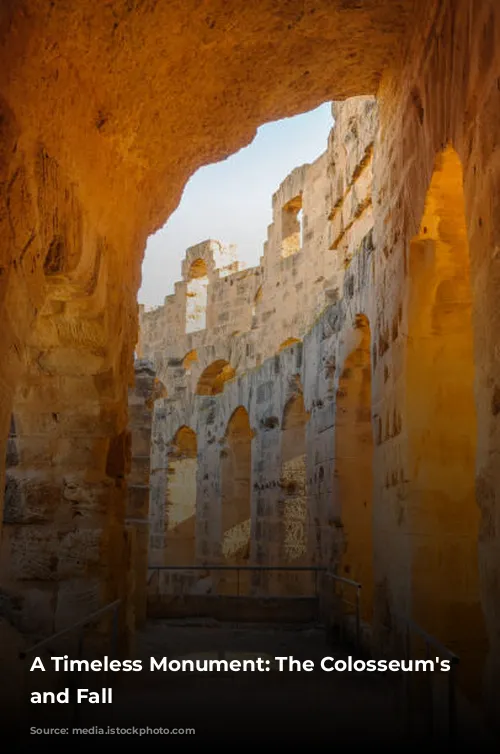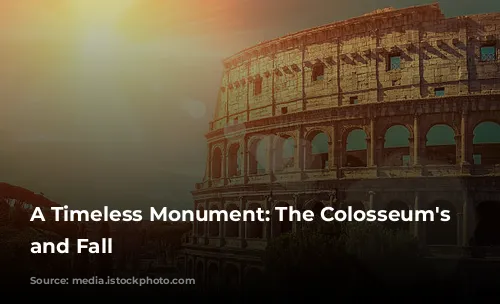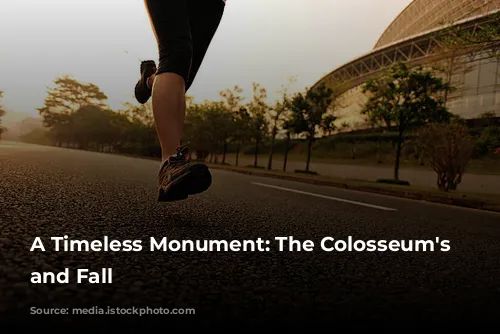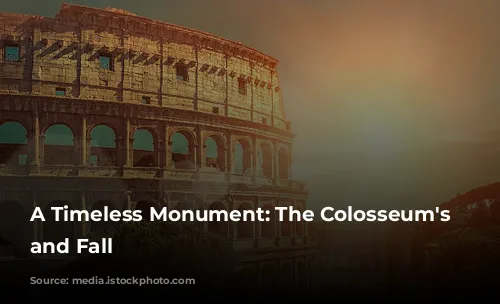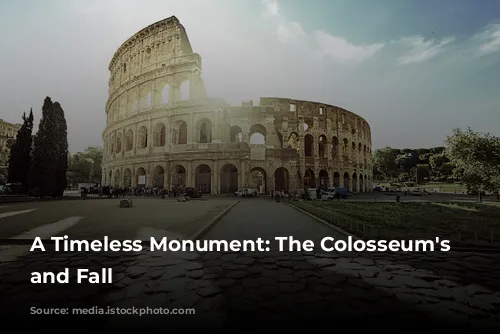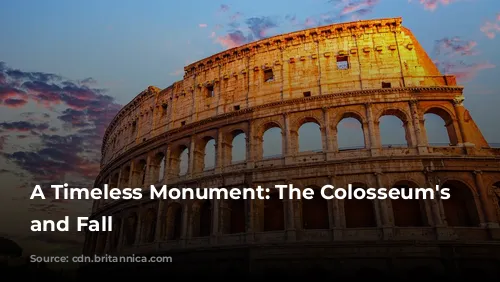The Colosseum, one of the few largely intact structures remaining from the Roman Empire, stands as a testament to ancient Rome’s incredible architectural and engineering skills. It is also a major source of income for the Italian government, attracting tourists from around the world. In 2018, the Colosseum, Roman Forum, and Palatine Hill together generated over $63.3 million (€53.8 million), making it the most popular tourist attraction in Italy.
A History of Neglect and Rebirth
Unfortunately, the Colosseum’s journey has not been without its challenges. After the fall of the Western Roman Empire, the once-glorious arena fell into severe disrepair. During the 12th century, the Frangipane and Annibaldi families used it as their fortress, transforming this iconic structure into a stronghold. In the late 15th century, Pope Alexander VI allowed the Colosseum to be used as a quarry, stripping away its marble and decorative elements for other building projects. For over a thousand years, this architectural wonder was left to deteriorate, its grandeur slowly fading. However, in the 1990s, state-funded restoration efforts began, marking a turning point in the Colosseum’s fate.
From Imperial Entertainment to Public Spectacle
The Colosseum’s construction was part of a larger imperial effort to revitalize Rome after the turbulent “Year of the Four Emperors” in 69 CE. Emperor Vespasian, known for his practical approach, envisioned the Colosseum as a public entertainment venue, a place to bring Romans together. It was designed to host a variety of spectacles, including thrilling gladiator fights, exciting animal hunts, and even elaborate mock naval battles.
A Legacy of Labor and Luxury
Construction of the Colosseum began under Emperor Vespasian between 70 and 72 CE. His son and successor, Titus, dedicated the completed structure in 80 CE. Domitian, Titus’s brother, added the fourth story in 82 CE, completing the Colosseum’s imposing silhouette. It’s important to note that the arena was funded by the spoils of war, specifically the wealth gained from Titus’s sack of Jerusalem in 70 CE. The construction was carried out by enslaved Jews from Judaea, a sobering reminder of the empire’s brutal practices.
A Masterpiece of Roman Engineering
The Colosseum is an amphitheatre, also known as the Flavian Amphitheatre, built by the Flavian emperors of the Roman Empire. It is an elliptical structure, built using stone, concrete, and tuff, reaching four stories high at its peak. Measuring 620 by 513 feet (189 by 156 meters), it could accommodate as many as 50,000 spectators. The Colosseum became synonymous with gladiatorial combat, captivating audiences with its thrilling displays of skill and brutality.
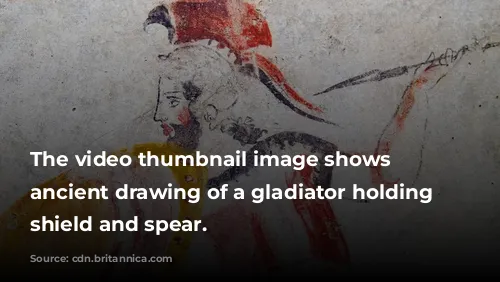
A Symbolic Shift: From Emperor’s Pleasure to Public Gathering
The Colosseum, located east of the Palatine Hill, stands on the site of Nero’s Golden House. The artificial lake, once the heart of this lavish palace complex, was drained to make way for the Colosseum. This decision was as much about symbolism as practicality. Vespasian, who rose from humble beginnings, chose to replace Nero’s extravagant lake with a public amphitheatre, a space for the people of Rome to gather and share in the spectacle.

A Triumph of Architectural Innovation
Unlike earlier amphitheatres, which were often built into hillsides for support, the Colosseum stands as a freestanding structure. Its construction involved a complex system of barrel vaults and groin vaults, achieving a colossal scale of 620 by 513 feet (189 by 156 meters). The exterior features three tiers of arcades, each adorned with engaged columns following the Doric, Ionic, and Corinthian orders. This rising arrangement of columns influenced later architectural styles, becoming a key element of the Renaissance codified system known as the “assemblage of orders”. The Colosseum’s main structure and facade were built using travertine, while volcanic tufa formed the secondary walls, and concrete was used for the inner bowl and arcade vaults.
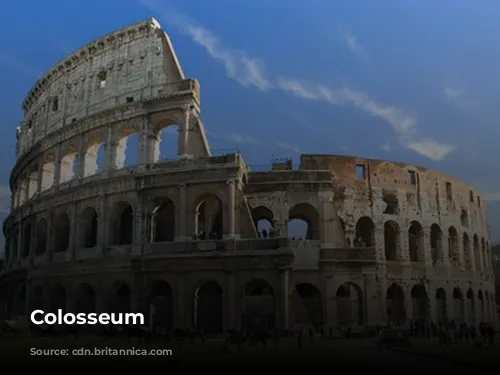
Spectacle and Shade: An Audience Under the Velarium
The Colosseum could seat approximately 50,000 spectators, shielded from the sun by a massive retractable awning known as the velarium. Supporting masts were anchored to corbels built into the Colosseum’s attic story, requiring hundreds of Roman sailors to manipulate the rigging and extend or retract the velarium. The arena was the scene of countless spectacles: gladiatorial combat, man vs. animal encounters, and even elaborate mock naval battles. However, the authenticity of stories claiming the martyrdom of early Christians in the Colosseum remains uncertain.
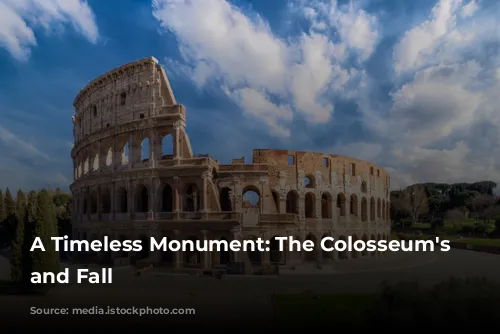
The Colosseum: A Legacy of Restoration and Tourism
In medieval times, the Colosseum was repurposed as a church, then as a fortress for the Frangipane and Annibaldi families. Over time, it suffered damage from lightning, earthquakes, vandalism, and pollution. The marble seats and decorative elements were stripped away, transforming the Colosseum into a quarry for over a thousand years. The 19th century marked the beginning of earnest preservation efforts, led by Pope Pius VIII. Further restoration projects, initiated in the 1990s, helped revive the Colosseum’s grandeur. Today, it is one of Rome’s most popular tourist attractions, attracting close to seven million visitors annually. Regularly changing exhibitions, focused on the culture of ancient Rome, enrich the visitor experience, keeping the Colosseum’s history alive for generations to come.
